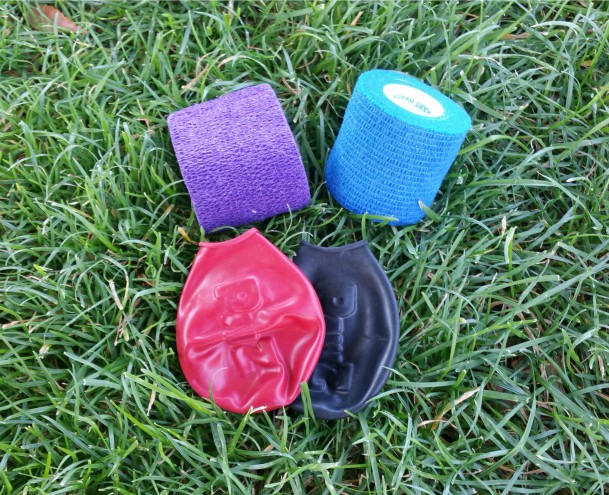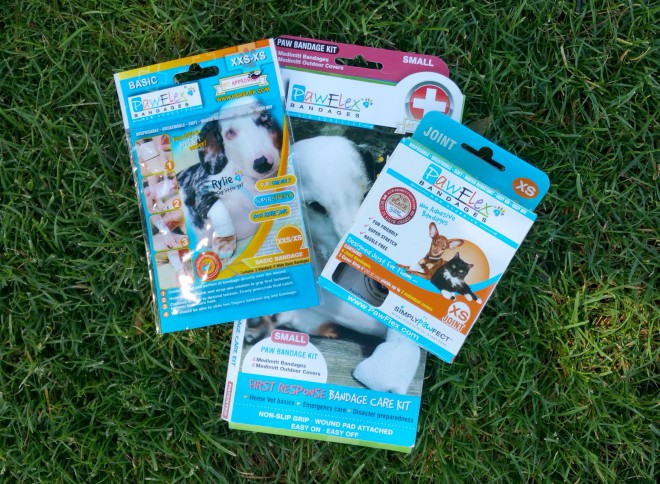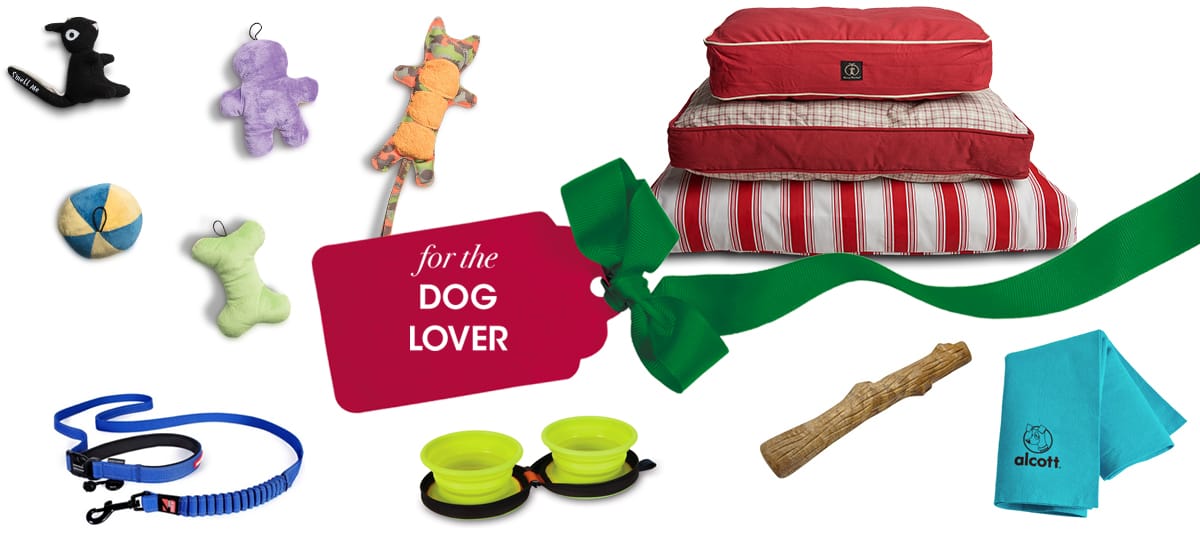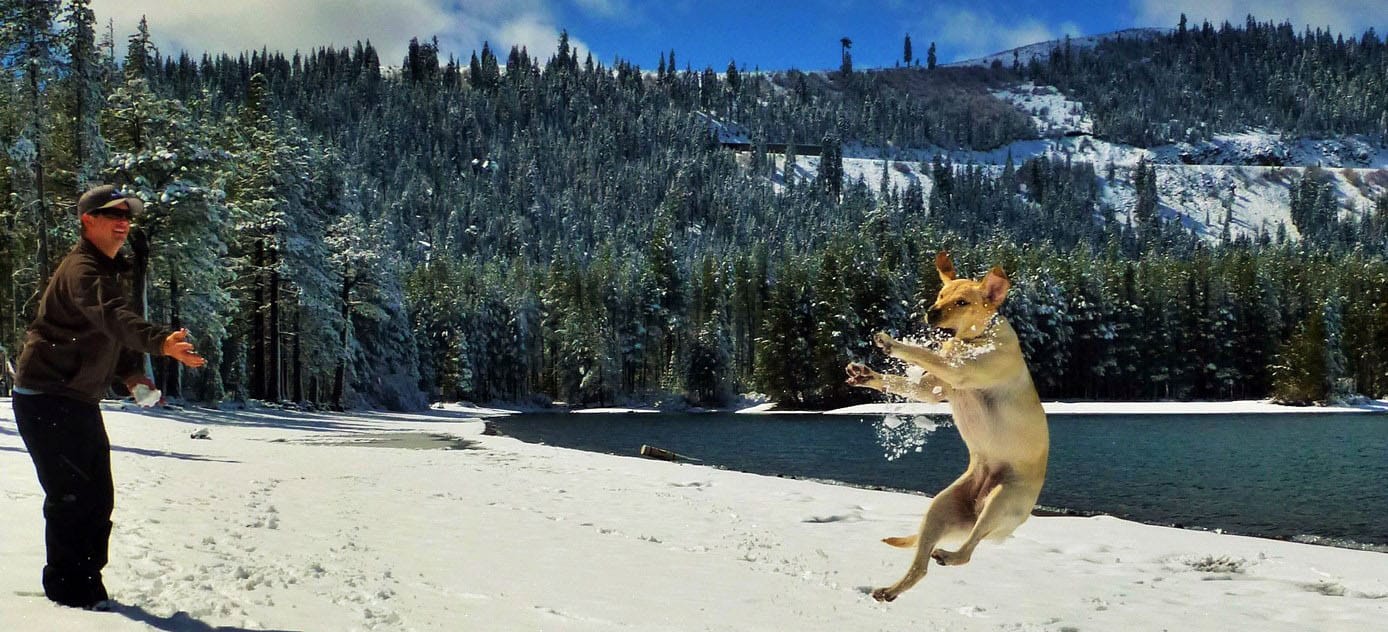Heck, if you are like me, you have a few. You have a big one for multi-day trips, a smaller one for day trips, and a little one for short, multi-hour adventures.
If you bring your dog with you, you also need to be prepared for their potential injuries. While it's true that you can probably use what is in your own kit to improvise, it's not the best plan. There are a couple of reasons why.
One reason is that the first aid kits you purchase typically have the minimum supplies needed to treat yourself, or one other human friend, if an injury occurs. If you use those supplies for your dog -- and you often have to use twice as much when improvising -- those things won't be available if something happens to the people in the group.
The other reason is that not everything can be improvised. Or at least the improvised things won't work very well.
If you are bringing your furry friend along for an adventure, it's best to have supplies specifically for their common injuries in your first aid kit.
There are two options if you want to be prepared for your dog: you can purchase a dog-specific first aid kit or you can add first aid items for your dog to your own kit. I've done it both ways and, even if I buy a dog-specific first aid kit, I always end up customizing it.
Important: Neither the author of this article or Sierra Trading Post staff have any pet medical training and are not liable for any injuries or illnesses that may occur to you dog as the results of said injuries. The author is just sharing her tips and advice learned from over 10 years of hiking with dogs.
Here are my top 7 items to add to a first aid kit for your dog:
1. Muzzle
When injured, even the nicest dog can bite. They are in pain and may not know that you are trying to help. You can purchase a soft muzzle so it's easy to pack or bring a piece of wide webbing that you can fasten into a makeshift one. A triangular bandage can also be used but be sure you add an extra one to your first aid kit if you go with that option.
2. Hydrogen Peroxide
While hydrogen peroxide can cleanse wounds, it's primarily used for pets when they swallow something poisonous. If you give your dog hydrogen peroxide, the bubbles irritate the stomach and cause them to throw up the poison. DO make sure the hydrogen peroxide you bring is 3% and research the recommended dosage amount for your dog. You can find mini bottles or foil packets of peroxide for first aid kits to cut down the weight.
Note: as with humans, it's important to know for what substances vomiting should NOT be induced. Also, it's ALWAYS recommended to consult with a veterinarian before inducing vomiting, but that is not always possible in the backcountry. A medical evaluation by a veterinarian in still important. Inducing vomiting is intended to buy you time.
3. Syringe with Measurement Markings
This one is good to have for both humans and dogs. It can be used for flushing out wounds or squirting the correct dose of hydrogen peroxide down your dog's throat in the case of poisoning.
4. Vet Wrap
This flexible bandage tape is amazing. It sticks to itself but doesn't stick to skin or hair. It's like the duct tape of first aid; you can use it in a multitude of different ways and it solves a lot of problems.

5. Dog Boots
Dog boots are great for covering your dog's foot to keep scratches or small cuts clean. They are also good for placing over bandages to keep them clean and dry. If you want to use them to cover bandages, remember to buy a size or two up so they are big enough to fit over the extra padding.
6. Dog Bandages

Dog bandages, such as PawFlex bandages, are made specifically for injuries on your dog's paw or leg. They're "all in one" bandages with wound pad and fastener attached. They're breathable, flexible, water resistant and, most importantly, non-adhesive. I include the basic bandage, the universal/joint bandage, the paw bandage kit and the protective covers that are made specifically for them in my kit. They are available in several sizes so you can find the perfect one for your pup.
7. Emergency Blanket
You probably have one of these for you in your first aid or emergency kit. You know, one of those little foil blankets? If not, be sure to throw one in. Since a dog has a smaller body mass, it's harder for them to stay warm when they are not moving. An emergency blanket for your dog can keep them from getting hypothermia while they are being treated or evacuated.
Those are the most important dog-specific items to include in a homemade dog first aid kit. However, a first aid kit is only effective if you know how to use the stuff inside.
I you haven't already, be sure to take a first aid course if you spend a lot of time outdoors. A human first aid course will give you the basics of wound care and wrapping that you can modify for your dog. However, taking a pet first aid class is best so you know how to understand and address things that may go wrong with your dog.

Do you have any tips or recommendations for handling dog first aid in the outdoors?



